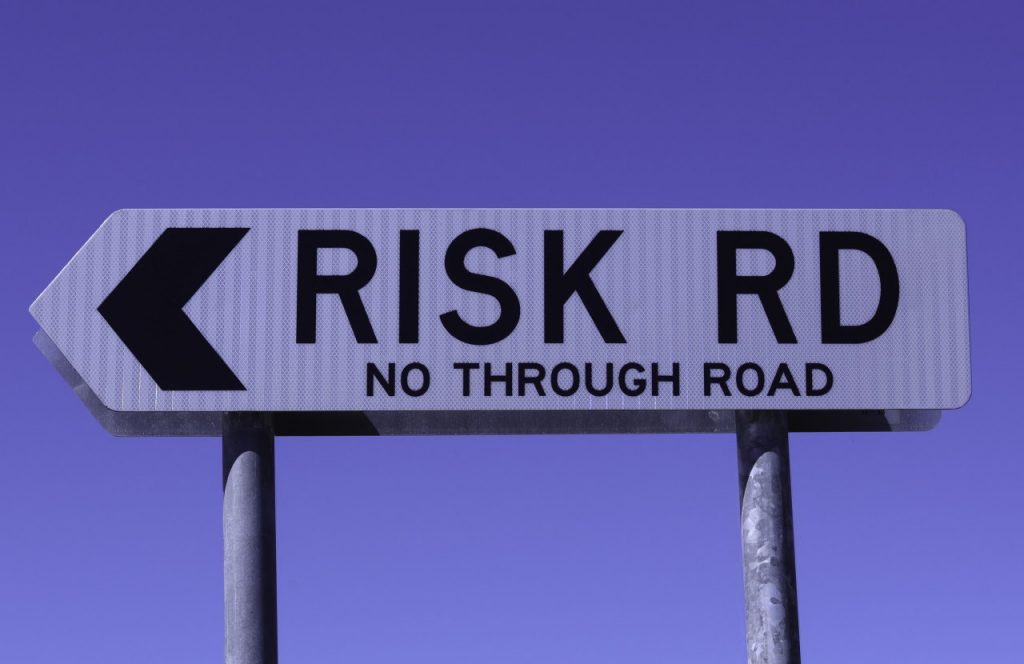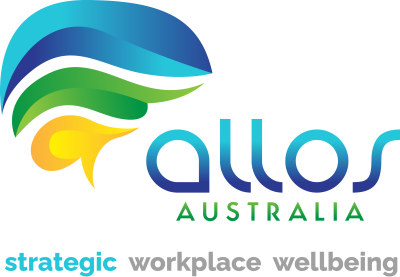John Holt and Nick Watts, our resident Psychological Health & Safety Management experts discuss the fundamentals of building and implementing an effective Psychological Health and Safety Management system. If you’d like their guidance click here to schedule a free discovery call.

John: So Nick, I appreciate that we have a new standard and code of practice, but is this actually a ‘thing’? To me, it seems that everyone is jumping on the bandwagon, which is all very well and good, but what’s the point? How does this make anything better? How does everyone suddenly become a workplace mental health specialist for colleagues with a mental health problem?

Nick: It’s not about making everyone a workplace mental health specialist or ensuring people have psychology degrees before becoming managers or leaders. Nor is it about treating mental illness. It’s about understanding the risks and psychosocial hazards that workers are exposed to and creating a physically and psychologically healthy workplace.
The evidence is clear that elevating mutual trust and respect across an organisation reaps better results for the individuals and the business as a whole. In other words, improving psychological health and safety is a strategic advantage.
The new standard (ISO45003) sets out a guide to best practice in delivering this. The various state Codes of Practice also reiterate this and provide a blueprint for businesses to follow. In addition, Worksafe now has a document to review businesses against and, as with other areas of safety, they can stop work if they deem the work unsafe.
Once you know where you are on the journey, the next step is for the organisation to decide on how to measure and monitor their performance going forwards. E.g. What are the lead indicators? How do they ensure that business performance benefits simultaneously? Subsequently, regular reviews ensure continuous improvement and self-management to maintain a trusting environment where psychosocial risk factors are identified and dealt with.
If you think about it, psychosocial safety has formed the foundation of families and communities for most of human history. When you apply that same type of respect and trust in the workplace, the workforce are happier, healthier, more engaged, loyal and productive. It’s a win-win for everybody.
One word of warning however. Simply raising awareness and making sure every worker can identify psychological hazards is not sufficient. The real benefits of this approach are only realised if the senior leaders lead by example. This is where our NewLens program comes into play.
John: What should leaders do to create a psychosocially safe workplace?
Nick: Leadership is the key to creating an environment of trust, collaboration, and a shared purpose. It starts with looking at the skills needed to deliver a people-focused leadership approach, such as creating an environment of learning and trust and the attitudinal changes required. Focusing on potential psychosocial risk factors at the job design stage and encouraging the team to build a safe workplace where they care for each other reduces the chance of serious injury and blame games when things go wrong.
In line with these increased skills at the leadership level, there needs to be a greater awareness across the business so that the workforce knows what to expect of their leaders. Employees need to know that they can speak out and suggest improvements without the fear of ridicule or repercussions. They also need to know that leaders will not ignore disrespectful behaviours between colleagues.
John: Why isn’t it enough to just expect staff to do what their manager says?
Nick: They can do what the manager asks, but if they don’t feel trusted and feel that they belong to the organisation and have a common purpose, they will just go through the motions and not work to their full potential. This is presenteeism.
In addition, many leaders who operate with a ‘command and control’ management approach are also often foster an environment in which “who’s to blame?” is the first question asked when something goes wrong. Changing these habits needs effort and commitment.
John: If you train people to use equipment safely, and remove trip hazards, isn’t that safe enough?
Nick: You can’t have a physically safe environment without a psychosocially safe environment because unless people are thinking clearly and communicating effectively, the risk of accidents remains high – signs, barriers, and procedures don’t do much if people are distracted. Plus, a physically safe is just one part of a psychosocially safe environment. If your leaders are looking after the team, then the team can look out for physical, mental and emotional risks in the workplace and this is where a truly safe environment exists.
John: A leader is too busy to listen to suggestions and review incident reports. This is going to add extra stress on them. Isn’t that counter productive to the psychosocially safe workplace argument?
Nick: If the leader builds a psychosocially safe workplace, he trusts his team to complete the tasks without the need for micromanaging or checking every detail of their work. The team will take pride in their work and feel that sense of common purpose and belonging. They will look for new ways of doing things better and therefore the manager or leader will be able to concentrate on the working environment and wellbeing of his team members because he will have more time to do so.
Leaders who understand the benefits to the business and themselves, both professionally and personally, will find they have time to work on the business rather than in the business. They will trust their team to complete the work and keep themselves safe, both mentally and physically, with the knowledge that if something goes wrong, their team will find ways to learn and improve.
What’s the cost of ignoring psychological health and safety?

Because psychosocial safety touches every member of the workforce and every part of the business, the cost of ignoring it can be catastrophic for employers. Nevertheless, many organisations don’t see it until it’s too late. This is because so much of what constitutes psychosocial safety is intangible, and so, leaders who struggle to see beyond their dashboards and tangible costs are at the greatest risk.
One obvious cost is absenteeism. However, this cost is beyond financial. When an employee is away from work, either someone else has to cover for them, or the work simply doesn’t get done. Either way the service to the customer, whether internal or external, is compromised – that means the organisation’s reputation is at risk. Plus, it’s not just the absent employee’s work that’s compromised; those left to pick up the slack find the standard of their own work suffers. If that goes on too long or too frequently, resentment builds, and the atmosphere can quickly turn toxic.
An even more significant concern is when employees are distracted and disengaged from their work; also known as ‘presenteeism’. This is the silent killer of business productivity. While it’s difficult for employers to measure, the research that has been done is clear; from a productivity perspective, the cost of presenteeism exceeds the cost of absenteeism many times over. What’s more, disengagement is a key reason why people end up quitting.
When an employee does quit, it’s not just knowledge and skill that are lost. Firstly, there are recruitment costs, then training, and the time it takes for the team to start working together efficiently. Once these costs are factored in, it’s easy to see how replacing a single staff member can run into the tens of thousands of dollars.
Do psychological health and safety guidelines really work?
Whether it is the codes of conduct in each state or the global ISO standards, psychological health and safety guidelines are the culmination of decades of evidence-based research into what makes work great for both employee and employer. So, on paper, they are the best recipe for success. In practice however, businesses can fall prey to box-ticking and superficiality. This is a critical error because the gap between ‘saying’ and ‘doing’ is always obvious to the workforce and in that gap grows cynicism and distrust.
The good news is that so long as businesses avoid that trap and instead see their imperfections as growth opportunities, the result is greater levels of trust and respect throughout the workforce. This opens the door to engage each employee’s sense of purpose and invite them to take on challenges and progress within the organisation. This, in turn, drives focus, motivation, commitment, and value creation while simultaneously reducing legal liabilities, presenteeism, absenteeism, and attrition.
There is, of course, one other priceless benefit; it’s just a nicer way to work.
How to build Psychological Health and Safety throughout your organisation.
Before you begin you need to understand where you are on the journey. Once you know that and you have a goal you want to aim for. Below are a list of possible options you can introduce to your organisation to bolster your psychosocial health and safety standing.
Mental Health First Aid Courses. If you’re starting from scratch, you need to have a sufficient level of awareness and literacy before you can venture further. Offering Mental Health First Aid courses is a fast and cost-effective way of achieving this. However, keep in mind, as the name suggests, this is reactive and by no means constitutes psychosocial hazard prevention. What it will provide you with is a fundamental knowledge base amongst your staff, as well as give them the skills and confidence to support someone experiencing poor mental health.
Engagement Survey/Work Survey. Surveys are great if you have a workplace culture where people feel their responses will be respected and acted upon. If not, they are met with scepticism and fear that the responses will not be truly anonymous or contribute to any meaningful change. As a result, you don’t get a true picture of what’s going on.
Being Curious and Paying Attention. Observing the workplace with a critical eye and open mind and asking questions of the employees in a non-threatening manner can be the beginning of the transition. Depending on the culture, this may be better done by an external agency.
HSE Management system review. When was the last time you reviewed your HSE management system? Do you even have one? Taking stock of your current system will help you to identify whether the processes sufficiently address key psychosocial hazards and avenues for improvement.
Professional Gap Analysis. The benefit of having experts guide you through the process (like our NewLens program😉) is that you get the peace of mind in knowing you’re simultaneously aligning with legal requirements, codes of conduct and international standards like ISO45003. Even if you’re not intending to become ISO45003 certified right now, by putting in place the fundamentals now, your business will be future fit.
Gain Management Commitment. One point that is emphasised in both the ISO45003 and the state codes of conduct is the importance of management commitment. Change of this scale takes time and persistence. Therefore, success is dependent on leadership’s buy-in and their commitment to follow through on initiatives.
Training Leaders. One of the best ways to gain management commitment is to give leaders the opportunity to experience the benefits first-hand. This can be achieved through training all leaders in the skills to deliver business results through people-focused leadership training.
Never settle. Finally, your initiatives need to be monitored through a measurement system and reviewed often. This allows you to tweak your efforts. If the workplace culture is right, and there is a sense of trust, belonging and common purpose across the organisation, learning will accelerate, leading to greater efficiency, productivity and employee wellbeing.
About the authors:
John Holt is Lead Health & Safety Auditor with Allos Australia. He runs our NewLens program which assists businesses to better understand and identify key opportunities for additional efficiencies and effectiveness of work design and safety management systems. Learn more about John and the team here.
Nick Watts has an MBA in Project Management and over 30 years of operational management experience in government and private sectors including GM roles in Health, Safety, Environment and Wellbeing. Nick heads up Allos’ NewLens program. Learn more about Nick here.

